advertisement
- Privacy Policy
- Business Directory

Travel disruptions affecting Harrow this weekend

If you’re planning to use public transport in Harrow this weekend, brace for some changes due to scheduled maintenance work and other disruptions.
Here’s a quick summary of what’s happening on key lines.
Bakerloo Line
On Saturday 27 and Sunday 28 April, there will be no service on the entire Bakerloo line. Alternative routes include other Tube lines, London Northwestern Railway trains, or local buses. Rail replacement buses will operate between Paddington and Willesden Junction, and between Queen’s Park and Harrow & Wealdstone.
Central Line
The Central line continues to face disruptions, with TfL apologising for the inconvenience. Commuters should allow extra travel time and consider alternate routes. For more information on service schedules, check TfL’s travel advice page.
London Overground
Several sections of the London Overground will be closed due to Network Rail maintenance work:
- Saturday 27 and Sunday 28 April: No service between Watford Junction and Euston. Use London Northwestern Railway or local buses.
- Rail replacement buses will operate between Watford Junction and Harrow & Wealdstone , and between Harrow & Wealdstone and Queen’s Park.
- Sunday 28 April: No service between Wandsworth Road and Clapham Junction until 10:00, with Southern Railway providing alternative services. Reduced service between Clapham Junction and Kensington (Olympia) until 10:15, with trains every 30 minutes.
Elizabeth Line
The Elizabeth line will also be affected by disruptions:
- Saturday 27 April: The last train from Heathrow T5 to Paddington at 00:07 will terminate at Ealing Broadway due to HS2 work at Old Oak Common station.
- Sunday 28 April: No service between Paddington and Ealing Broadway until 07:45. Heathrow Express and Great Western Railway services won’t operate during this time.
Plan ahead, check TfL’s travel advice, and use alternative routes when traveling this weekend.
- Harrow and Wealdstone
- Harrow News
- Harrow Online
EDITOR PICKS
Recent burglaries in harrow: police issue safety warnings and advice, wrestlemania could be held in london under sadiq khan’s plans, harrow incident: air ambulance lands in park, police block road, popular posts, three people stabbed, one dead after major incident in harrow town centre, husband and wife from ealing convicted of exporting £57 million cocaine haul, friends set up go fund me for harrow’s nikki grahame as she battles anorexia.
- Community 1307
- Business 662
- More News 472
- Articles 425
- Harrow Council 305
- Education 246
- History 189
- London News 164

© Harrow Online
- Editorial Team
- Complaints Procedure

Apply For Visa Application
You take care of your trip, we take care of your visa
Apply for your visa in 3 easy steps

Fill the application form
Submit the required information, including your data, email address, passport details, the purpose of your travel, and any other relevant details. Additionally, please attach any supplementary documents if deemed necessary.

Register an online payment
Kindly remit the visa handling fee using any of the provided online payment methods. Once your payment has been successfully received and recorded, please proceed to the subsequent step. Our service fee of 99 USD covers all taxes and fees associated with the request.

Check your inbox
Upon approval of your application, the processed eVisa will be promptly delivered to your designated email inbox. To ensure the smooth receipt of your eVisa without any complications or delays, please ensure that you provide an accurate email address in the application form.
Countries We Support for Immigration

The Kuwait e-Visa is a visa that permits a single entry and remains valid for a duration of 30 days starting from the date of issuance. It grants its holders the opportunity to stay in Kuwait for up to 90 days (equivalent to three months) and participate in activities related to business and tourism.

You can complete the Egyptian e-Visa application process within minutes using any functional device with an internet connection.

Vietnam eVisa is an electronic visa introduced in February of 2017 for foreigners who want to enter Vietnam for tourism, business, or transit purposes for no more than 30 days.
Why People Choose Us Over Other Platform
Choose us for a seamless and cost-effective visa application process. Our trusted services, backed by 24/7 support, ensure a hassle-free experience. Experience peace of mind knowing that your visa application is handled with expertise and care.

Quick and Simple Process
The visa application process is designed to be effortless and user-friendly. By following a few simple steps, you can conveniently complete your application and obtain your desired visa. Our intuitive online platform allows you to easily provide the required information, attach any necessary documents, and make the required payment through a secure online payment system. Once your application is submitted, our efficient processing system ensures a swift review and approval process. Upon approval, your processed eVisa will be promptly delivered to your email inbox, eliminating the need for any physical paperwork or visits to a consulate or embassy. Our streamlined process aims to provide you with a hassle-free experience, saving you time and effort while ensuring a seamless journey.

Cost-Effective
The application process offers cost-effective solutions for obtaining your desired visa. We strive to keep our fees competitive and reasonable, ensuring that you receive value for your investment. By eliminating the need for physical paperwork and in-person visits to consulates or embassies, we save you additional expenses such as travel costs. Our efficient online platform enables you to conveniently complete the application process from the comfort of your own home, further reducing any associated expenses. We prioritize affordability without compromising on the quality and efficiency of our services, making the visa application process cost-effective for our valued customers.

Trusted by Clients
We are trusted by our clients because we prioritize their needs and consistently deliver reliable visa services. With our team of experienced professionals, we ensure accurate and thorough assistance throughout the application process. Security is paramount, and we employ robust measures to protect our clients’ information. Our customer-centric approach, transparent communication, and positive testimonials reflect our commitment to excellence. You can trust us to handle your visa application with professionalism, integrity, and a focus on your satisfaction.

24/7 Support
We take pride in offering round-the-clock support services to our clients. Our dedicated support team is available 24/7 to assist you at every step of the visa application process. Whether you have a question about the application requirements, need guidance on filling out the forms, or require updates on the status of your application, our support team is just a message or call away. We understand that visa matters can be time-sensitive and may require immediate attention, which is why we ensure that our support services are available at any time, day or night. Our commitment to providing reliable and accessible support further enhances the convenience and peace of mind of our valued clients.
What Our Customers are Talking About us
Thank you very much on your assistance.

That’s great, thank you very much.

Business Owner
Hi , thank you very much. Hope I need your assistance for near future. Carlos

Thank you very much your help is greatly appreciated.

Watch CBS News
California Governor Newsom launches abortion travel ban ad campaign in Alabama
By Dave Pehling
Updated on: April 22, 2024 / 1:41 PM PDT / CBS San Francisco
California Governor Gavin Newsom is taking aim at states considering abortion travel bans with the launch of a new ad campaign.
Newsom's Campaign for Democracy ad is set to air in Alabama starting Monday. The governor tweeted out the ad in a social media post Sunday morning.
Alabama’s abortion ban has no exceptions for rape or incest. Now, Republicans are trying to criminalize young women’s travel to receive abortion care. We cannot let them get away with this. pic.twitter.com/gHbYJYlEXk — Gavin Newsom (@GavinNewsom) April 21, 2024
The text with the video post reads, "Alabama's abortion ban has no exceptions for rape or incest. Now, Republicans are trying to criminalize young women's travel to receive abortion care. We cannot let them get away with this."
The 30-second commercial shows two nervous young women driving in a car passing a sign that reads "State Line 1 Mile."
"We're almost there. You're gonna make it," the passenger tells the woman behind the wheel just before they hear a siren and are pulled over by a state trooper.
"Trump Republicans want to criminalize young Alabama women who travel for reproductive care," a voiceover says as the state trooper walks up to the car.
"Miss, I'm going to need you to step out of the vehicle and take a pregnancy test," the trooper says, waving a test stick in one hand. The next shot shows the driver leaning on the hood of her car as the trooper puts her in handcuffs.
"Stop them by taking action at RightToTravel.org ," the voiceover intones as the ad ends.
Alabama is currently weighing a bill that would make it a crime to help women travel outside the state in order to receive an abortion. The ad is part of a larger effort to combat travel bans across the United States. Newsom was behind a similar ad that ran in Tennessee.
The RightToTravel.org website says that those two states and Oklahoma are considering bills that ban minors from traveling out of state to get an abortion without parental consent, even if it's a case of incest or if there is abuse in the family.
It isn't the first action the governor has taken in the political battle over abortion since the U.S. Supreme Court overturned Roe v. Wade in June of 2022. Two days after the ruling, Newsom partnered with the governors of Oregon and Washington to issue a multi-state commitment promising to defend access to reproductive health care, including abortion and contraceptives.
In September of that year, he launched a billboard campaign in seven of the most restrictive anti-abortion states urging women seeking the procedure to come to California for treatment. He also signed more than a dozen new abortion laws protecting women's reproductive rights and ordered the state to end its contract with Walgreens after the pharmacy giant indicated it would not sell an abortion pill by mail in some conservative-led states .
- Gavin Newsom
- Roe v. Wade
Dave Pehling started his journalism career doing freelance writing about music in the late 1990s, eventually working as a web writer, editor and producer for KTVU.com in 2003. He moved to CBS to work as the station website's managing editor in 2015.
Featured Local Savings
More from cbs news.
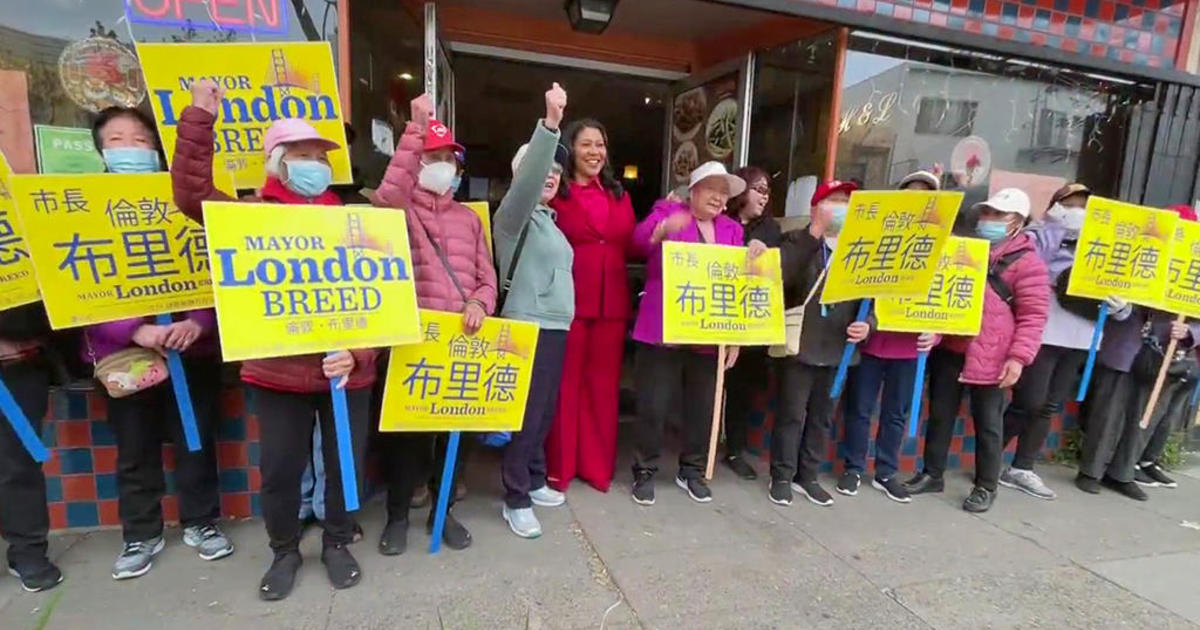
Recently returned from China, London Breed takes mayoral campaign to San Francisco streets
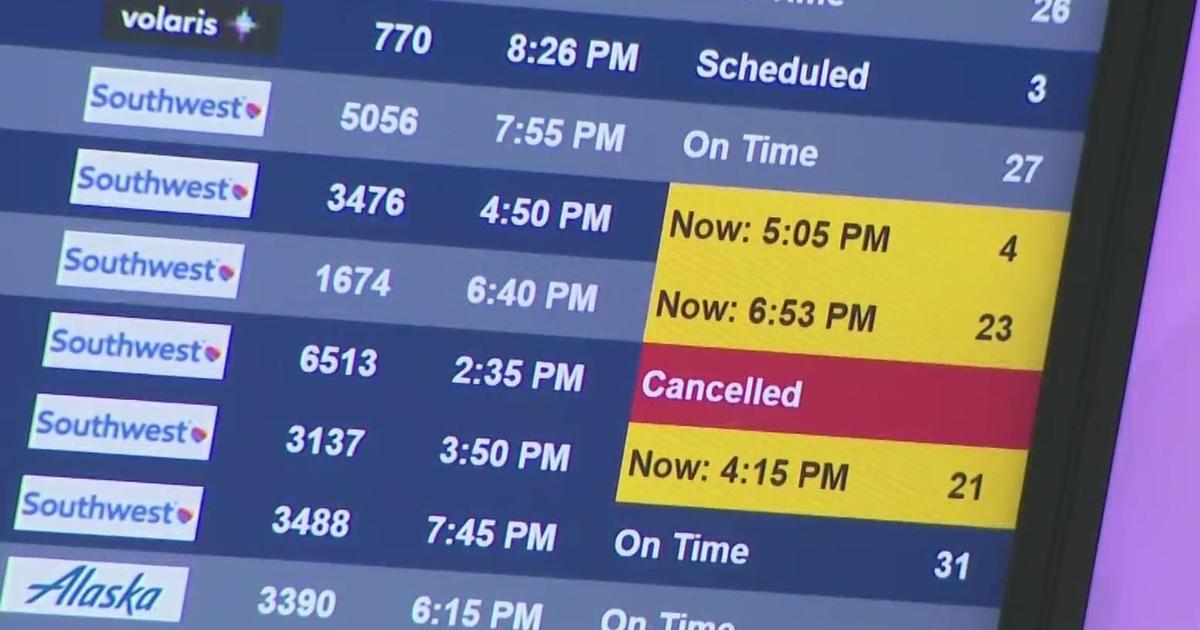
Bay Area air travelers welcome new refund rules on canceled flights, lost luggage

Harvey Weinstein's 2020 rape conviction overturned by New York court

Advocates seeking rent control in San Pablo submit signatures for ballot measure
Your best Friend in Italy
Since 1996 we select the best that italy has to offer.
© TravelOnline.org 1996-2019

traveline south west
- Plan your Trip
- Get Departure Times
- My Regular Trip
- Stop Timetables
- Route Timetables
- Contact Details
This website uses cookies for analytics and advertising. Read more about it in our Cookie Policy .
Plan a Journey
Welcome to traveline south west , from a to b by public transport., download the traveline sw app.

- Terms and Conditions
- Cookie Policy
- Privacy Policy
- Help and FAQ
- Health & Wellness Health & Wellness
- Who We Are Who We Are
- Commitments & Impact Commitments & Impact
- Health & Wellness Health & Wellness Our care Health research Climate events & health Recipes Health tips
- Who We Are Who We Are Our mission Fast facts Our history Our people Leadership team Permanente Medicine Annual reports Risant Health
- Commitments & Impact Commitments & Impact Healthy communities Equity, inclusion, & diversity Public policy
- Our care Health research Climate events & health Recipes Health tips
- Our mission Fast facts Our history Our people Leadership team Permanente Medicine Annual reports Risant Health
- Healthy communities Equity, inclusion, & diversity Public policy
Getting care while traveling just got easier
Kaiser Permanente’s agreement with Cigna provides more convenient access to care when you’re away from home.
The last thing anyone wants to worry about while traveling for work or on vacation is how to get emergency or urgent health care if you need it during your trip. A new collaboration with Cigna eases that concern for Kaiser Permanente members.
Our members who are away from home can now access Cigna’s national PPO, or preferred provider organization, network of physicians and providers should they need emergency or urgent care during their travels.
“This new feature provides our members an improved experience, added convenience, and greater confidence that if they get sick or are injured while away from home, they will have access to great care,” said Arthur Southam , MD, executive vice president of health plan operations for Kaiser Permanente. “This gives our members another option to get the high-quality care they need, wherever they are.”
More ways to get care
Our members now have even more ways to get care when and how they need it — virtually and in person. With Get Care Now on kp.org , members have 24/7 access to care from Kaiser Permanente health care professionals by phone or video. For in-person care while away from home, Kaiser Permanente members are covered for urgent and emergency care, anywhere in the world. This new access to Cigna’s U.S. provider network makes getting that care easier and more convenient.
As part of this improved experience with Cigna, members with Kaiser Permanente HMO or exclusive provider organization plans won’t pay up front or have to file a claim for reimbursement — they will only be responsible for their regular copay or other cost share.
And if it’s more convenient, members can still go to any urgent or emergency care facility while traveling and submit a claim to Kaiser Permanente for reimbursement.
Learn more about how to get urgent or emergency care away from home .
Helpful tips before traveling
Are you a Kaiser Permanente member who travels on business trips, to visit family, or for vacation? Make sure you know how to get care while away from home.
- Register on kp.org so you can see your health information online and email your Kaiser Permanente doctor’s office with nonurgent questions anytime.
- Get our Kaiser Permanente app to stay connected when you’re on the go and for quick access to your digital ID card. You can also order a new or replacement card before you travel.
- Save the Away from Home Travel Line phone number, 951-268-3900 (TTY 711), to your mobile device for travel support anytime, anywhere.
- See your doctor (sign in required) if you need to manage a condition during your trip.
- Refill your eligible prescriptions (sign in required), including contact lenses, to have enough while you’re away. Be sure to refill at least 1 or 2 weeks before your trip so there’s time to process your request.
- If you travel by plane, keep your prescription medications with you in your carry-on baggage.
- Make sure you understand what services are covered while you travel . Call the Away from Home Travel Line if you have any questions.
Visit kp.org/travel to learn more.
Note: The Cigna PPO Network refers to the health care providers (doctors, hospitals, specialists) contracted as part of the Cigna PPO for Shared Administration. Cigna is an independent company and not affiliated with Kaiser Foundation Health Plan, Inc., and its subsidiary health plans. Access to the Cigna PPO Network is available through Cigna's contractual relationship with the Kaiser Permanente health plans.
The Cigna PPO Network is provided exclusively by or through operating subsidiaries of Cigna Corporation, including Cigna Health and Life Insurance Company. The Cigna name, logo, and other Cigna marks are owned by Cigna Intellectual Property, Inc.
The Cigna PPO Network is not available to HMO and EPO members enrolled in coverage issued by Kaiser Foundation Health Plan of Washington and Kaiser Foundation Health Plan of Washington Options, Inc.
- Share Getting Care While Traveling Is About To Get a Lot Easier on Pinterest
- Share Getting Care While Traveling Is About To Get a Lot Easier on Linkedin
- Share Getting Care While Traveling Is About To Get a Lot Easier on Twitter
- Share Getting Care While Traveling Is About To Get a Lot Easier on Facebook
- Print Getting Care While Traveling Is About To Get a Lot Easier
- Email Getting Care While Traveling Is About To Get a Lot Easier
- Health access
- News and announcements
- Arthur M. Southam MD MBA MPH
- Our organization
- Health and wellness
- Healthy travel
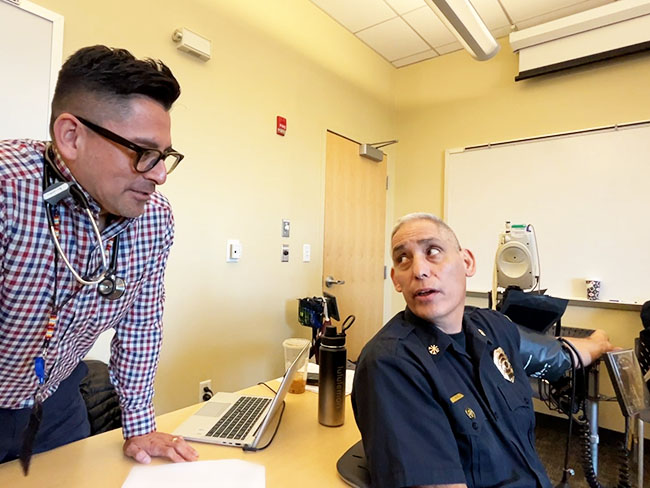
April 9, 2024
Denver fire department annual blood work screenings triple.
It’s easy to put off recommended health screenings, and sometimes even …

March 26, 2024
Donations assure access to affordable health care.
Kaiser Permanente grant and challenge spark $18.7 million for Denver Health’s …

March 18, 2024
Program helps member prioritize her health.
Medical Financial Assistance program supports access to health care.

February 26, 2024
Patients can apply for help with medical bills.
Kaiser Permanente offers financial assistance for people struggling to …

February 2, 2024
Expanding medical, social, and educational services in watts.
Kaiser Permanente opens medical offices and a new home for the Watts Counselin …

November 9, 2023
Announcing the common health coalition.
Kaiser Permanente, AMA, AHA, ACHP, and AHIP join to strengthen the partnership …

November 1, 2023
Tips for healthy holiday travel.
Six steps help you prep for winter trips.

September 6, 2023
Advancing mental health crisis care through public policy.
Organizations that provide public mental health crisis services must work …

August 28, 2023
Grants improve the total health of our communities.
Kaiser Permanente increases access to mental health services in Southern …

August 2, 2023
Social health resources are just a click or call away.
The Kaiser Permanente Community Support Hub can help members find community …

June 30, 2023
Our response to supreme court ruling on lgbtqia+ protections.
Kaiser Permanente addresses the Supreme Court decision on LGBTQIA+ protections …

June 1, 2023
Policy recommendations from a mental health therapist in training.
Changing my career and becoming a therapist revealed ways our country can …

May 30, 2023
Kaiser permanente commits up to $10 million to denver health.
Funding comes as Denver Health provided $120 million in uncompensated care …

Volunteer-driven clinic offers free care in Washington
The annual Seattle King County Clinic brings health care to low-income …

May 22, 2023
Investing and partnering to build healthier communities.
Kaiser Permanente supports Asian Americans Advancing Justice to promote …
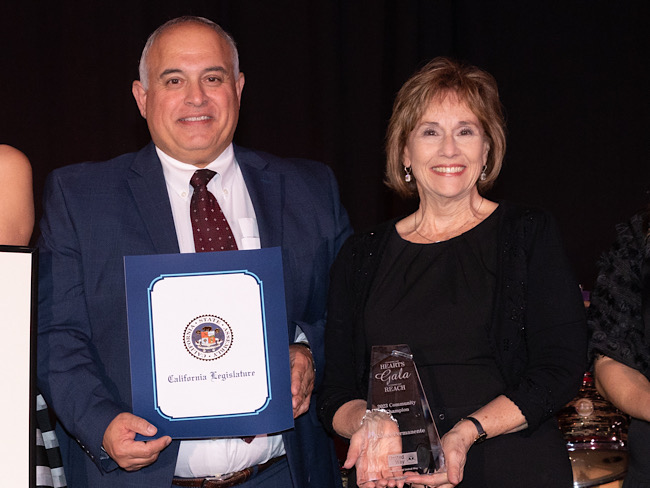
May 19, 2023
Partnering to improve the health of homeless individuals.
Grant funds will combat housing inaccessibility and improve health care …

May 11, 2023
Covid-19 testing, testing — get results in 1, 2, 3.
Testing is the most important way you can help control the spread of COVID-19.

April 7, 2023
Increasing access to health care.
Kaiser Permanente launches new mobile health vehicle on Oahu.

March 13, 2023
Making waves with our first female sports ambassador.
Kaiser Permanente in Southern California partners with San Diego Wave Fútbol …

January 27, 2023
Timely flu vaccinations at community events.
Proactive flu prevention outreach in Downey, California.
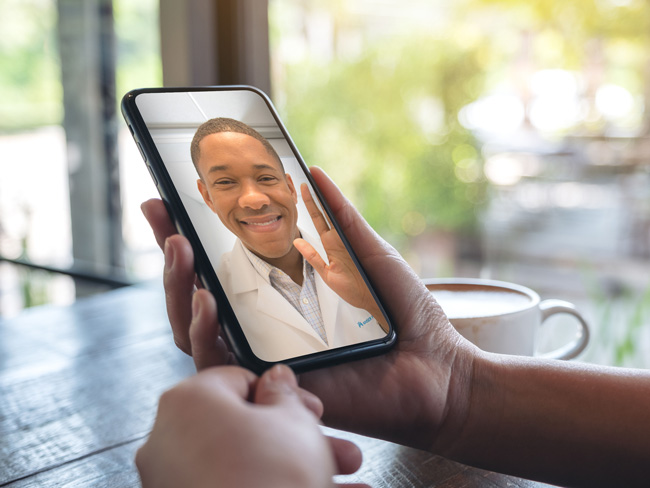
January 17, 2023
Lawmakers must act to boost telehealth and digital equity.
Making key pandemic-era telehealth policies permanent and ensuring more …

November 8, 2022
Protecting access to medical care for legal immigrants.
A statement of support from Kaiser Permanente chair and CEO Greg A. Adams …

October 26, 2022
Watts community project reaches construction milestone.
Our expansion in Watts is part of a broader community health commitment …
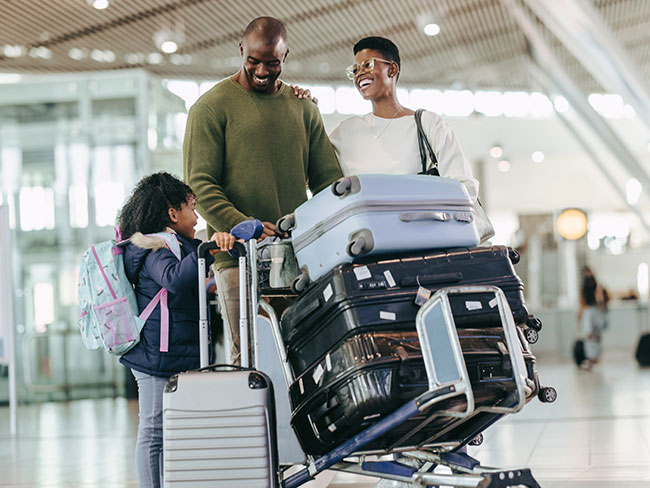
October 5, 2022
Safe travels: our members now have more u.s. care options.
Need urgent care in Florida? Michigan? Alaska? Here are 2 ways we’ve made …

August 17, 2022
2021 annual report sheds light on another challenging year.
We reflect on 3 major COVID-19 surges, urgent vaccination efforts, and …


August 12, 2022
Preserving affordable health care coverage for millions.
Congress should act to make COVID-19 policies permanent and ensure millions …

August 8, 2022
Kaiser permanente and medical teams launch mobile services.
Mobile dental and medical clinics are now available for uninsured individuals …
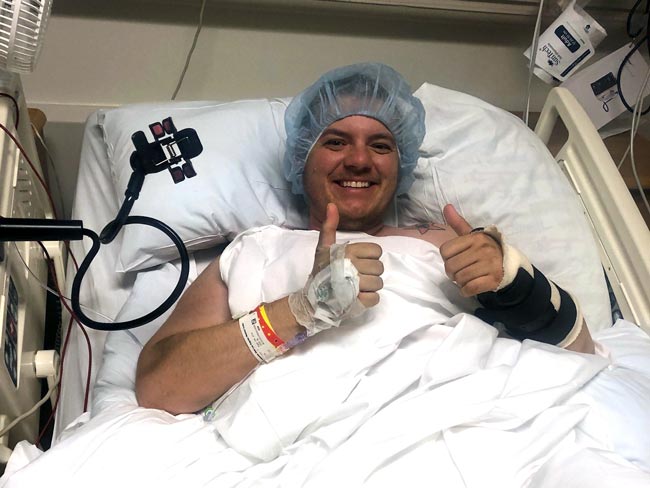
March 30, 2022
A transgender man’s journey to become himself.
A Kaiser Permanente member receives physical and emotional support from …

February 4, 2022
Expanding medi-cal enrollment, improving quality.
Kaiser Permanente, state of California reach agreement to cover more people …

November 30, 2021
Bechara choucair, md, returns as chief health officer .
After serving on the White House COVID-19 response team, Bechara Choucair, …

October 28, 2021
When things fell apart, telehealth was her lifeline.
Stuck at home during the pandemic, a Kaiser Permanente member with autoimmune …

July 13, 2021
Taking a stand against anti-asian hate.
Kaiser Permanente and Advancing Justice — AAJC support Asian Americans, …

June 23, 2021
Our 2020 annual report reflects on a unique year.
Commitment to high-quality, affordable, compassionate care remains in a …
April 1, 2021
Campaign strives for equitable covid-19 protection.
The goal is to fill information gaps for COVID-19 prevention and vaccines, …
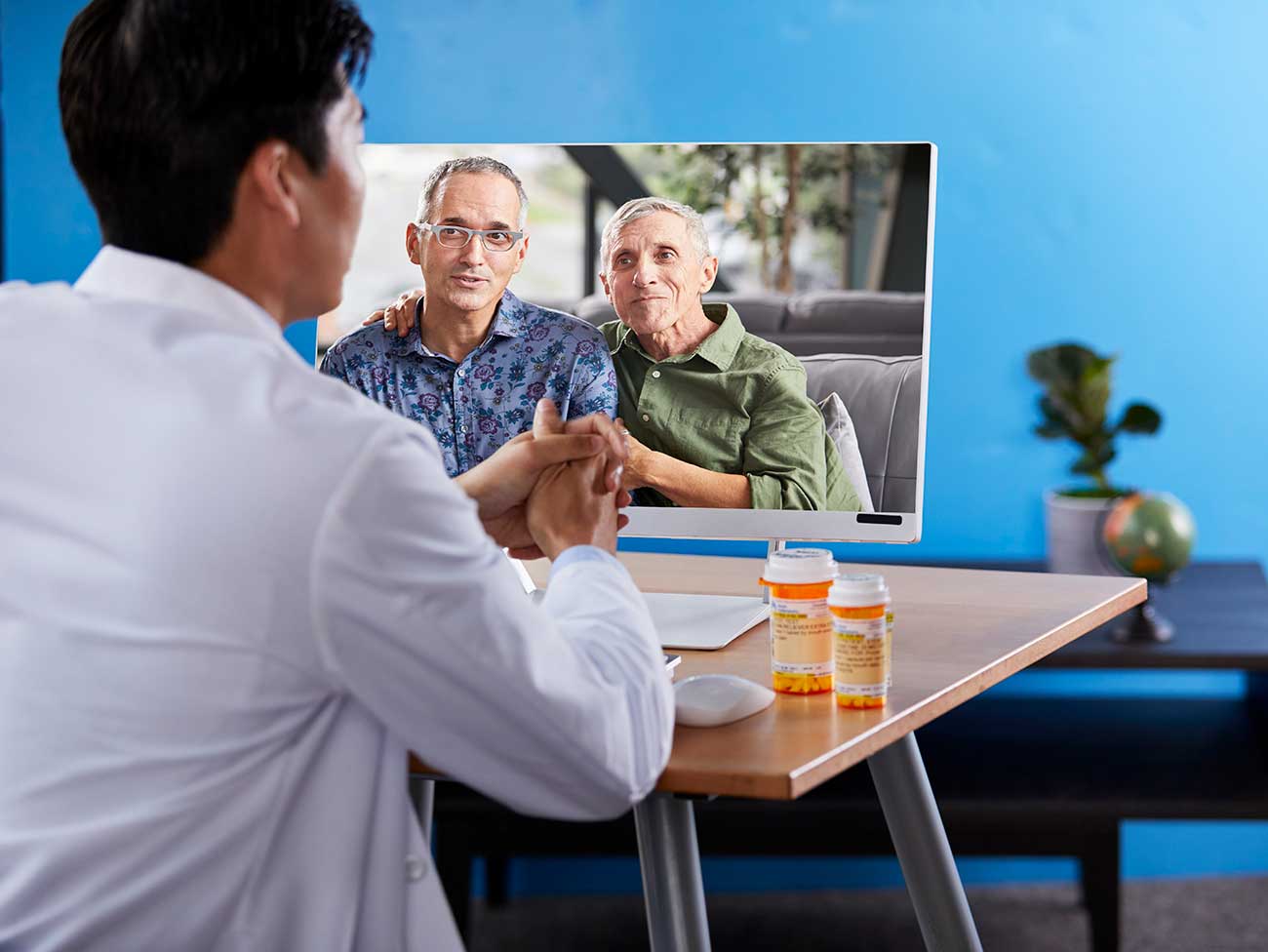
November 23, 2020
Top of the class in customer care.
Newsweek names Kaiser Permanente as the nation’s best for customer service, …

July 21, 2020
Transcending language barriers in health care for decades.
Good communication is key to good health. During Kaiser Permanente’s 75th …

July 1, 2020
A breakout moment for virtual care.
Kaiser Permanente’s fully integrated telehealth capabilities place quality …
News and views from one of America’s leading health care providers and not-for-profit health plans.
On this site.

JourneyOnline – Demo
Wherever You Are
Searching for answers to life's toughest questions.
Life can be hard. We all face challenges and trials, but finding answers can be frustrating. Don’t lose hope. There is an answer. We’ll help you find it.

You may be facing a heartfelt issue in life that is troubling. You are not alone. There is an Answer and He will journey with you.
- Hopelessness
- Insignificance
Life Issues

Article / Video
Living again: overcoming the pain of death.
Note to translator: In the Article Details section for this post, you will place an embed code for your video (if applicable). This section…
- Walk with Jesus
You decided to become a follower of Jesus Christ. Explore these easy lessons to learn more about God, the Bible, and what it means to follow…
Example Story
Note to translator: A story is a person’s story or testimony. You can find an example story here: …
Overcoming Shame
Note to translator: In the Article Details section for this post, you will place an embed…
Seven Steps to Finding True Love
Rediscovering your worth, illness and healing, discovering real hope, found guilty.
Note to translator: In the Article Details section for this post, you will place an embed…
An official website of the United States government
Here’s how you know
Official websites use .gov A .gov website belongs to an official government organization in the United States.
Secure .gov websites use HTTPS A lock ( Lock Locked padlock icon ) or https:// means you’ve safely connected to the .gov website. Share sensitive information only on official, secure websites.

U.S. citizens traveling abroad
Find out about visas, the Trusted Traveler programs, what to do in an emergency, and more.
Visas for U.S. citizens traveling abroad
If you are a U.S. citizen planning to travel abroad, you may need a visa to enter a foreign country. Learn how to find your destination's visa requirements.
Save time getting through airport security with Trusted Traveler Programs
When you become a member of a Trusted Traveler Program such as TSA Precheck and Global Entry, you can spend less time in airport security lines and at border crossings.
COVID-19 international travel advisories
If you plan to visit the U.S., you do not need to be tested or vaccinated for COVID-19.
Emergency help for Americans abroad
Find out what to do in an emergency in another country, including assistance, money and more.
International driver’s license for U.S. citizens
If you are a U.S. citizen planning to drive while traveling abroad, find out the driver’s license requirements for the country you are visiting.
Do you need a passport to travel to or from U.S. territories or Freely Associated States?
The travel documents you need as a U.S. citizen to travel to or from a U.S. territory or Freely Associated State depend on your destination.
Authenticate an official document for use outside the U.S.
Apostilles and authentication certificates show U.S. documents are genuine. Learn when to use each.
- Skip to main content
- Keyboard shortcuts for audio player
Airlines are ordered to give full refunds instead of vouchers and to stop hiding fees

Travelers and their luggage in a terminal at Los Angeles International Airport in August 2023. Mario Tama/Getty Images hide caption
Travelers and their luggage in a terminal at Los Angeles International Airport in August 2023.
WASHINGTON — In an effort to crack down on airlines that charge passengers steep fees to check bags and change flights, the U.S. Department of Transportation has announced new regulations aimed at expanding consumer protections .
One of the final rules announced Wednesday requires airlines to show the full price of travel before passengers pay for their tickets. The other will force airlines to provide prompt cash refunds when flights are canceled or significantly changed.
"Passengers deserve to know upfront what costs they are facing and should get their money back when an airline owes them - without having to ask," said Transportation Secretary Pete Buttigieg in a statement announcing the new rules.

Taking on junk fees is popular. But can it win Biden more voters?
Surprise junk fees have become a large and growing source of revenue for airlines in recent years, according to the DOT.
"Today's announcements will require airlines to both provide passengers better information about costs before ticket purchase, and promptly provide cash refunds to passengers when they are owed — not only saving passengers time and money, but also preventing headaches," Buttigieg said.
The airline industry is unlikely to welcome the new rules. At a hearing on the proposed fee rule in March 2023, an industry lobbying group representing American, Delta and United said it would be too difficult for airlines to disclose their charges more clearly.
"The amount of unwanted and unneeded information forced upon passengers" by the new policy would only cause "confusion and frustration," warned Doug Mullen, the deputy general counsel at Airlines for America . "Very few, if any, need or want this information, and especially when they are initially trying to understand schedule and fare options."
But the DOT insists its new rule will give consumers the information they need to better understand the true costs of air travel.
Transportation Department cracks down on airline 'junk fees'
"I believe this is to the benefit of the sector as a whole," Buttigieg said in an interview with NPR's Morning Edition , because passengers will have "more confidence in the aviation sector."
The new rules require airlines to disclose all baggage, change, and cancellation fees, and to share that information with third-party booking sites and travel agents.
The regulation also prohibits bait-and-switch tactics, the DOT says, that disguise the true cost of flights by advertising a low base fare that does not include all mandatory fees.
"This is really about making sure that we create a better experience for passengers, and a stronger aviation sector in the United States," Buttigieg said in the NPR interview.
- Credit cards
- View all credit cards
- Banking guide
- Loans guide
- Insurance guide
- Personal finance
- View all personal finance
- Small business
- Small business guide
- View all taxes
You’re our first priority. Every time.
We believe everyone should be able to make financial decisions with confidence. And while our site doesn’t feature every company or financial product available on the market, we’re proud that the guidance we offer, the information we provide and the tools we create are objective, independent, straightforward — and free.
So how do we make money? Our partners compensate us. This may influence which products we review and write about (and where those products appear on the site), but it in no way affects our recommendations or advice, which are grounded in thousands of hours of research. Our partners cannot pay us to guarantee favorable reviews of their products or services. Here is a list of our partners .
New Airline Requirements: Cash Refunds and Transparent Fees

Many or all of the products featured here are from our partners who compensate us. This influences which products we write about and where and how the product appears on a page. However, this does not influence our evaluations. Our opinions are our own. Here is a list of our partners and here's how we make money .
The U.S. Department of Transportation (DOT) announced two new sets of rules for airlines on Wednesday in an effort to curb what it calls “unfair and deceptive” practices in the industry. These rules aim to ensure cash refunds for travelers when airlines cancel or delay their flights, and to provide better upfront information about the cost of baggage and cancellation fees.
“This is about airlines treating passengers better,” said Secretary of Transportation Pete Buttigieg in a video announcing the new rules, suggesting that the new rules could save passengers millions of dollars in fees.
Cash refunds instead of vouchers
The first set of rules entitles passengers to cash refunds when their flight is delayed or canceled or when an airline fails to adequately provide a paid service — such as baggage transportation or in-flight Wi-Fi. Many airlines currently offer these refunds as expirable vouchers that can only be used for future purchases. Passengers are often required to jump through hoops to request and receive a cash refund. The new DOT rules require airlines to issue prompt, automatic cash refunds to the original form of payment.
With the new rules, passengers have also been given clarity around what counts as “significant delays” — a definition that has been muddy until now . A delay will now be considered “significant” if it is more than three hours for a domestic flight and six hours for an international one.
Clear displays of add-on fees
The second set of rules addresses those “junk fees” that the Biden administration has been railing against for years. It requires airlines and travel agents (including online travel booking platforms) to disclose the cost of checked and carry-on baggage, as well as change and cancellation fees, along with the fare itself. That is, these fees won’t show up as surprises later in the checkout process.
Airlines are required to display the details of these fees “clearly, conspicuously, and accurately,” according to the DOT's announcement. Currently, customers must sometimes navigate complex tables and calculators to determine how much these add-ons will cost.
U.S. airlines vary significantly in how much they charge customers on top of the base fare for these fees. A NerdWallet analysis found that Frontier Airlines charges $157 each way for a checked bag, carry-on bag and seat selection, while Southwest Airlines charges nothing.
The new DOT rules do not require airlines to disclose the cost of seat selection fees, which have become an increasingly lucrative source of ancillary revenue for U.S. airlines, generating $4.2 billion in revenue in 2022, according to an estimate from IdeaWorksCompany, an airline industry reporting firm, and CarTrawler, a travel software provider. Yet the rules do require airlines to explain that passengers are guaranteed a seat even if they don’t pay for a specific one, which has been a source of confusion for many.
When will passengers see the changes?
The DOT requires airlines to update their refund policies for delays and cancellations within the next six months, but airlines have as long as 12 to 24 months to implement some of the other rule changes.
It’s not clear exactly how airlines and online travel agencies will implement the required changes, especially the disclosure of add-on fees. Given the DOT’s language, it seems that third-party booking platforms such as Google Flights and Kayak will need to display fare costs inclusive of baggage fees. This would represent a sea change in how customers shop for airfare — and would help alleviate the end-of-checkout sticker shock many travelers now experience.
Yet airlines have grown increasingly adept at lowering base fares while increasing add-on fees, and they may simply pivot toward other hidden fees instead of the ones DOT has determined are “critical.”
How to maximize your rewards
You want a travel credit card that prioritizes what’s important to you. Here are our picks for the best travel credit cards of 2024 , including those best for:
Flexibility, point transfers and a large bonus: Chase Sapphire Preferred® Card
No annual fee: Bank of America® Travel Rewards credit card
Flat-rate travel rewards: Capital One Venture Rewards Credit Card
Bonus travel rewards and high-end perks: Chase Sapphire Reserve®
Luxury perks: The Platinum Card® from American Express
Business travelers: Ink Business Preferred® Credit Card

on Chase's website
1x-5x 5x on travel purchased through Chase Travel℠, 3x on dining, select streaming services and online groceries, 2x on all other travel purchases, 1x on all other purchases.
60,000 Earn 60,000 bonus points after you spend $4,000 on purchases in the first 3 months from account opening. That's $750 when you redeem through Chase Travel℠.

1.5%-6.5% Enjoy 6.5% cash back on travel purchased through Chase Travel; 4.5% cash back on drugstore purchases and dining at restaurants, including takeout and eligible delivery service, and 3% on all other purchases (on up to $20,000 spent in the first year). After your first year or $20,000 spent, enjoy 5% cash back on travel purchased through Chase Travel, 3% cash back on drugstore purchases and dining at restaurants, including takeout and eligible delivery service, and unlimited 1.5% cash back on all other purchases.
$300 Earn an additional 1.5% cash back on everything you buy (on up to $20,000 spent in the first year) - worth up to $300 cash back!

on Capital One's website
2x-5x Earn unlimited 2X miles on every purchase, every day. Earn 5X miles on hotels and rental cars booked through Capital One Travel, where you'll get Capital One's best prices on thousands of trip options.
75,000 Enjoy a one-time bonus of 75,000 miles once you spend $4,000 on purchases within 3 months from account opening, equal to $750 in travel.

The independent source for health policy research, polling, and news.
What are the Implications of the Dobbs Ruling for Racial Disparities?
Latoya Hill , Samantha Artiga , Usha Ranji , Ivette Gomez , and Nambi Ndugga Published: Apr 24, 2024
- Issue Brief
Introduction
The June 2022 Supreme Court ruling in the case Dobbs v. Jackson Women’s Health Organization has significant implications for racial disparities in health and health care. The decision overturned the longstanding Constitutional right to abortion and eliminated federal standards on abortion access that had been in place for nearly 50 years in all states across the country. As a result of Dobbs , large swaths of the country lack abortion access, with a disproportionate impact on those residing in the South and Midwest.
As of April 2024, 14 states have implemented abortion bans, 11 states have placed gestational limits on abortion between 6 and 22 weeks, and 25 states and the District of Columbia provide broader access to abortions after 22 weeks gestation. (This reflects Arizona being counted in the gestational limits category, as implementation of a recently upheld Civil War-era law banning nearly all abortions in the state is still pending amid ongoing court actions.)
Pregnant women seeking abortion that reside in states that prohibit or restrict abortions either have to travel out of state or try to obtain medication abortion pills via a telehealth appointment with an out-of-state clinician, but these options are not accessible to everyone. Some women may turn to self-managed abortions, but some will not be able to obtain an abortion and have to continue a pregnancy they do not want. Additionally, there have been reports of clinicians in states with bans and early gestational limits leaving their states due to the restrictions and criminalization for care that they provide, potentially exacerbating provider shortages in some areas.
With these state-level restrictions in place, people of color residing in those states may face disproportionately greater challenges accessing abortions due to longstanding underlying social and economic inequities, which could exacerbate existing disparities in maternal and infant health. This analysis examines the implications of state restrictions on abortion coverage for racial disparities in access to care and health outcomes. It is based on KFF analysis of data from the Centers for Disease Control and Prevention (CDC), American Community Survey (ACS), Behavioral Risk Factor Surveillance Survey (BRFSS), and Survey of Household Economics and Decisionmaking (SHED) (see Methods ). Throughout this brief we refer to “women” but recognize that some individuals who have abortions do not identify as women, including transgender. Key takeaways include the following:
- Black and American Indian and Alaska Native (AIAN) women ages 18-49 are more likely than other groups to live in states with abortion bans and restrictions . About six in ten Black (60%) and AIAN (59%) women ages 18-49 living in states with abortion bans or restrictions compared with just over half (53%) of White, less than half of Hispanic (45%), and about three in ten Asian (28%) and Native Hawaiian or Pacific Islander (NHPI) (29%) women ages 18-49.
- Many groups of women of color have higher uninsured rates compared to their White counterparts, and, a cross racial and ethnic groups, uninsured rates are higher in states with abortion bans or restrictions than in those that provide broader abortion access . Among women ages 18-49, roughly a fifth of AIAN (22%) and Hispanic (21%) women are uninsured as are 14% of NHPI women and 11% of Black women compared with less than one in ten (7%) of White women. Moreover, uninsured rates for women ages 18-49 are at least twice as high in states that banned abortion compared to those in states with broader access for White (10% vs. 5%), Hispanic (33% vs. 15%), Black (14% vs. 7%), and Asian (10% vs. 5%) women, and nearly three times higher for NHPI women (29% vs. 10%).
- Women of color have more limited financial resources and transportation options than White women, making it more difficult for them to travel out-of-state for an abortion . Some may also face linguistic barriers and have immigration-related fears that create additional challenges to accessing abortions.
- The bans and restrictions on abortions may widen the already stark racial disparities in maternal health, especially since some states do not explicitly have exceptions that allow abortion services when pregnancy is jeopardizing a woman’s health . The restrictions may also contribute to growing provider shortages in some areas, as clinicians are responding to concerns about criminalization and prohibited from offering the full spectrum of pregnancy care. Moreover, abortion restrictions may have negative economic consequences on families and put pregnant people at increased risk for criminalization.
While there have been large inequities in abortion access for many years, the Dobbs ruling opened the door to widening those differences further. Black and AIAN women are more likely to live in states with abortion bans or restrictions. While data on the impact of Dobbs to date on health outcomes is limited to date, many indicators suggest that the ruling may exacerbate longstanding large disparities in maternal and infant health. The issue also has moved to the forefront of policy debates in the U.S. Sixteen percent of women voters, rising to 28% of Black women voters, say abortion is the “ most important issue ” to their vote in the 2024 presidential election.
How do Abortion Rates Vary by Race and Ethnicity?
Data on abortions by race and ethnicity are limited . The federal Abortion Surveillance System from the CDC has been providing annual national and state-level statistics on abortion for decades, based on data that is voluntarily reported by states, DC, and New York City. While most states participate, one notable exception is California, which has many protections for abortion access and is one of the most racially diverse states in the nation. Furthermore, availability of data by race and ethnicity varies among states. The most recent data in the Abortion Surveillance System, from 2021, only includes racial and ethnic data from 31 states and DC and is generally only available for White, Black, and Hispanic women. While we present the data from the Abortion Surveillance System in this brief, we recognize these limitations.
Prior to Dobbs , the abortion rate was higher among Black and Hispanic women compared to their White peers . As of 2021, the abortion rate was 28.6 per 1,000 women among Black women, compared to 12.3 per 1,000 among Hispanic women, and 6.4 per 1,000 among White women (Figure 1). Data for other racial and ethnic groups were not available. The vast majority of abortions across racial and ethnic groups are in the first trimester . Approximately eight in ten abortions among White (82%), Hispanic (82%), and Black women (80%) occur by nine weeks of pregnancy. While data on the number of abortions post- Dobbs has been released by both the #WeCount project from the Society for Family Planning and the Guttmacher Institute’s Monthly Abortion Provision Study , neither sets of data have reported demographic characteristics of abortion patients.
There are many reasons why abortion rates are higher among some women of color . As discussed below, Black, Hispanic, American Indian and Alaska Native (AIAN), and Native Hawaiian or Pacific Islander (NHPI) women have more limited access to health care, which affects their access to contraception and other sexual health services that are important for pregnancy planning. Data show that contraception use is higher among White women (69%) compared to Black (61%) and Hispanic (61%) women. Some women of color live in areas with more limited access to comprehensive contraceptive options. In addition, the health care system has a long history of racist practices targeting the sexual and reproductive health of people of color, including forced sterilization, medical experimentation, the systematic reduction of midwifery, just to name a few . Many women of color also report discrimination by providers, with reports of dismissive treatment, assumption of stereotypes, and inattention to conditions that take a disproportionate toll on women of color and certain conditions, such as uterine fibroids . These factors have contributed to medical mistrust, which some women cite as a reason that they may not access contraception. In addition, inequities across broader social and economic factors — such as income, housing, safety and education—that drive health, often referred to as social determinants of health, affect decisions related to family planning and reproductive health.
How Do State Abortion Policies Vary Across Racial and Ethnic Groups?
Overall, 16.3 million or 25% of women ages 18-49 in the US live in one of the 14 states where abortion is banned, and another 16.9 million, or 26%, live in one of the 11 states with gestational limits between 6 and 22 weeks LMP. The remaining 32.8 million, or roughly 50%, live in states that provide broader access to abortions.
White, Black, and American Indian and Alaska Native women account for larger shares of women ages 18-49 in states that have banned or limited abortion access compared to states that provide broader access to abortion . Most of the states that have banned or restricted abortion are in the South, where more than half of the Black population and roughly a third of the White (36%) and AIAN (31%) population reside. In contrast, Hispanic and Asian women make up larger shares of women ages 18-49 in states that provide broader access to abortion compared to states with abortion bans or limits. (See Appendix Table B for the racial and ethnic distribution of women ages 18-49 by state).
Six in ten of Black (60%) and AIAN (59%) women ages 18-49 live in states with abortion bans or restrictions (Figure 3) . Just over half (53%) of White women ages 18-49 live in states with bans or restrictions, while less than half of Hispanic (45%) and about three in ten Asian (28%) and NHPI (29%) women ages 18-49 live in these states. Of note, in April 2024, the Arizona State Supreme Court upheld a Civil War era law banning nearly all abortions in the state. While that law is not currently in effect, if it were to go into effect in the future, the share of AIAN women living in a state with an abortion ban would rise from about three in ten (31%) to about four in ten (41%), and the share of Hispanic women living in a state with an abortion ban would increase from 24% to 28%.
How do potential barriers to accessing abortions vary by race and ethnicity?
Variation in abortion policies by state due to the Dobbs decision will likely result in women of color facing disproportionate access barriers since they face underlying disparities in health coverage and have more limited financial resources that may make it challenging to obtain an abortion out-of-state or via telehealth.
Health Coverage
Lack of health insurance limits women’s access to a broad range of health services, including contraception and pregnancy care, and leaves them at risk for significant out of pocket expenses for care. However, having coverage does not guarantee that it includes abortion benefits. In general coverage of abortion is more limited than for many other common health services. Some states prohibit coverage of abortion in state-regulated private insurance plans, and federal law bars the use of federal dollars for abortion, including in Medicaid, the national health coverage program for low-income individuals.
AIAN, Hispanic, NHPI, and Black women between ages 18-49 have higher uninsured rates compared to their White counterparts . Among women in this age group, roughly a fifth of AIAN (22%) and Hispanic (21%) women are uninsured as are 14% of NHPI women and 11% of Black women. In contrast, less than one in ten (7%) of White women lack insurance (Figure 4). These differences in uninsured rates are driven by lower rates of private coverage among these groups. Medicaid coverage helps to narrow these differences but does not fully offset them.
Across racial and ethnic groups, uninsured rates for women ages 18-49 in states that have banned or limited abortion are higher than rates in states where abortion is available beyond 22 weeks . Overall, 16% of women ages 18-49 in states that have banned abortion are uninsured compared to 12% in states that have gestational limits on abortions less than 22 weeks and 8% in states that have broader access to abortions. Uninsured rates for women ages 18-49 are at least twice as high in states that banned abortion compared to those in states with broader access for White (10% vs. 5%), Hispanic (33% vs. 15%), Black (14% vs. 7%), and Asian (10% vs. 5%) women, and nearly three times higher for NHPI women (29% vs. 10%) (Figure 5). However, even in states where abortion is not banned, many women do not have coverage, and uninsured rates remain higher for AIAN, Hispanic, and NHPI women compared to White women.
AIAN, Black, NHPI, and Hispanic women are more likely than their White counterparts to be covered by Medicaid, which provides limited coverage for abortions . For decades, the Hyde Amendment has prohibited the use of federal funds for coverage of abortion under Medicaid, except in cases of rape, incest, or life endangerment for the pregnant person. States can choose to use state funds to pay for abortions under Medicaid in other instances. However, among the 36 states that do not ban abortion, 17 use state funds to pay for abortions beyond the Hyde limitations for Medicaid enrollees. The other 19 states and DC continue to follow the Hyde limits, meaning women in these states covered by Medicaid likely must pay out of pocket for an abortion unless they meet the narrow circumstances of the Hyde Amendment.
Social and Economic Access Barriers
Women of color have more limited financial resources and transportation options than White women, making it more difficult for them to travel out-of-state for an abortion. The median self-pay cost of obtaining an abortion exceeded $500 in 2021, but costs can vary depending on the type of abortion, location, and if an individual has coverage. Traveling out of state raises the cost of abortion due to added costs for transportation, accommodation, and childcare. Moreover, it may result in more missed work, meaning greater loss of pay. Data suggest that women of color would have more difficulty than White women affording these increased costs and may face other barriers that could prevent them from traveling to obtain an abortion and instead turning to self-managed abortions or continuing the pregnancies.
Overall, AIAN (48%), Black (43%), NHPI (41%) and Hispanic (40%) women ages 18-49 are nearly twice as likely as their White counterparts (24%) to have low incomes (below 200% of the federal poverty level or $46,060 for a family of three as of 2022) (Figure 6) . Moreover, across most racial and ethnic groups, women in states that have banned abortion are more likely to have low incomes than women in states that allow abortions beyond 22 weeks. For example, 48% of NHPI women in states that have banned abortion have low incomes compared to 38% of NHPI women in states where abortion is available after 22 weeks gestation. (See Appendix Table C for state-level data on the share of women who are low-income by race and ethnicity.)
Over half of Hispanic (57%) and Black women (58%) ages 18-49 could not cover an emergency expense of at least $500 using their current savings compared to 36% of White women in this age group (Figure 7) . (Data for this measure were not available for other racial groups.) Women who have fewer resources for an emergency expense may be more likely to seek assistance from an abortion fund , which help cover the costs of abortions for people who cannot afford them. However, abortion funds are not able to keep up with the demand and support all those seeking assistance.
Black women ages 18-49 are more likely than their White counterparts to live in a household without access to a vehicle (12% vs. 4%), and Asian and AIAN women in this age group are more likely than White women to lack vehicle access (9% and 8%, respectively, vs. 4%) (Figure 8) . Hispanic and NHPI women are also more likely than White women to lack vehicle access, although the difference is smaller (6% and 6%, respectively, vs 4%). Research shows that out-of-state travel for abortion care has risen significantly since Dobbs, but women without vehicle access may face greater challenges to traveling out of state.
Immigration-related fears make some women reluctant to travel out of state for an abortion . Among women ages 18-49, about one-third of Asian women (33%) and roughly a quarter of Hispanic (24%) and NHPI (22%) women are noncitizens, who include lawfully present and undocumented immigrants (Figure 9). Many citizen women may also live in mixed immigration status families, which may include noncitizen family members. Noncitizen women and those living in mixed immigration status families may fear that traveling out of state could put them or a family member at risk for negative impacts on their immigration status or detention or deportation, especially in states that have moved to criminalize abortions. For example, some states have enacted laws that make it illegal to “ aid or abet ” someone in obtaining an abortion while some are trying to make it illegal to take a minor across state lines to obtain an abortion.
Differences in language barriers and access to technology may also contribute to racial disparities in abortion access . Roughly a quarter of Hispanic (26%) and Asian (25%) women ages 18-49 speak English “less than very well,” as do one in ten NHPI women (10%) compared to just 1% of White women (Figure 10). This can affect their ability to find information about abortions and locate a clinic that offers abortion services. In a national KFF survey of women conducted just before the Dobbs ruling, nearly three in ten Hispanic women (29%) said if they needed an abortion, they did not know where to go or find the information, higher than other groups. Internet access is another important factor for finding information about abortion care and also for telehealth appointments, which comprise a growing share of abortion care. Among women ages 18-49, 8% of AIAN and 6% of NHPI (6%) women live in a household without internet access, compared to 2% of White women (Figure 10).
What are the Potential Implications of Abortion Restrictions on Racial Disparities in Health, Finances, and Criminal Penalties?
Stark racial disparities in maternal and infant health predate the Dobbs decision but may widen due to the new restrictions on abortions since abortion services can be a key factor in managing pregnancy complications and emergencies that can lead to poor outcomes. Data suggest that the abortion restrictions may also contribute to growing provider shortages in some areas, which may increase access challenges and have negative impacts on health. Moreover, abortion restrictions may have negative economic consequences on families and put people at increased risk for criminalization.
Maternal Health
Prior to the Dobbs ruling there were already significant racial disparities in pregnancy-related and infant mortality, which may widen due to abortion restrictions . NHPI, Black and AIAN people are more likely to die while pregnant or within a year of the end of pregnancy compared to White people (62.8, 39.9 and 32.0 per 100,000 births vs. 14.1 per 100,000 births) (Figure 11). Restrictions on access to abortions limit options to terminate pregnancies for medical reasons. While all state bans have some limited exceptions to preserve the life of pregnant women, the language of these exceptions is vague and narrow, and far fewer have health exceptions. This means that some people have been forced to remain pregnant even when the pregnancy is threatening their health , which could further widen disparities. One study estimated that a total abortion ban in the U.S. would increase the number of pregnancy-related deaths by 21% for all women and 33% among Black women.
There also are racial disparities in certain birth risks and adverse birth outcomes which may be exacerbated by the abortion restrictions . Specifically, as of 2022, higher shares of births to Hispanic, Black, AIAN and NHPI people were among those who received late or no prenatal care, or were preterm, or low birthweight, compared to White people (Figure 12). Timely prenatal care is particularly important for people with higher-risk pregnancies, yet research suggests that restrictive abortion policies may be causing people to start prenatal care later in pregnancy, which is already a concern for women of color who are more likely to experience delays in prenatal care initiation. Births among Asian people were also more likely to be low birthweight than those of White people. Moreover, while the birth rate among teens has been declining over time for all groups, the rate for Black, Hispanic, AIAN, and NHPI teens was over two times higher than the rate among White and Asian teens in 2021 (Figure 13). Research has also found that state-level abortion restrictions that were in place prior to Dobbs were associated with disproportionately higher rates of adverse birth outcomes, including preterm birth, for Black individuals, and that inequities widened as states became more restrictive.
Abortion bans and restrictions limit care for people experiencing a pregnancy loss, which some groups of women of color are at higher risk of experiencing compared to their White counterparts . Pregnancy loss, which includes miscarriage and stillbirth, is common , occurring in up to an estimated 20% of all pregnancies. Data on racial and ethnic disparities in miscarriage is limited, but research shows that the rates of fetal mortality (fetal demise following 20 weeks of gestation) are higher among Black, AIAN, and NHPI women compared to White women (Figure 14). While some miscarriages, particularly earlier in pregnancy, pass without any medical intervention, some people seek medical care to complete a miscarriage and/or because their health may worsen with the continuation of an unviable pregnancy. Almost all medications and procedures used to manage miscarriages and stillbirths are identical to those used in abortions. As a result, clinicians may hesitate to provide care even when medically indicated because of concerns they could be conflated with providing an abortion and therefore risk criminalization or penalties as a result. Since the Dobbs ruling, there have been several high-profile cases of people experiencing pregnancy losses who could not obtain timely miscarriage care due to state abortion bans, jeopardizing their health as a result. In KFF’s national survey of OBGYNs after the Dobbs decision, more than half (55%) of OBGYNs practicing in states where abortion is banned said their ability to practice within the standard of care has worsened since Dobbs .
In states where abortion is banned or severely restricted, the number of women forced to continue a pregnancy is likely to rise, with data suggesting disproportionate increases among women of color . While it is relatively early to see the impact of the Dobbs ruling on births, initial research suggests that birth rates could increase as a result. One study to date has estimated that there have been approximately 32,000 “ additional ” births as a result of the ruling, primarily concentrated in states that have banned abortions and with a disproportionate effect among people of color. A study in Texas , which had implemented a ban on abortions after six weeks gestation starting September 2021 (prior to Dobbs ), found a 2% rise in the state’s fertility rate after the law’s implementation, with the sharpest increase among Hispanic women (8%).
Provider Access and Shortages
The Dobbs decision may exacerbate health care workforce shortages, particularly among clinicians providing obstetric and gynecologic care . State-level abortion bans criminalize clinicians who provide abortion care, and this has cascading effects on other aspects of maternity care. Even prior to Dobbs , there were concerns about workforce shortages in maternity care. The estimates that more than 5 million women of reproductive age in the U.S. live in counties that have few or no obstetric providers, with the largest gaps in rural communities as well as areas with higher rates of poverty, and larger shares of Black women. Many of these areas are in states with abortion bans and gestational restrictions, and there are reports of clinicians leaving these states because they are prohibited from and criminalized for offering the full scope of services they trained for and that comport with medical standards. Abortion restrictions may also affect the pipeline of new clinicians. A few studies to date, have found declines in US medical school graduates applying to OBGYN residency positions in states with abortion bans. While all positions were filled and the changes to date have been relatively small, they could suggest that future clinicians may prefer not to practice in states that ban abortion, potentially widening existing gaps in workforce capacity.
Many OBGYNs say that the Dobbs decision has had a negative impact on racial and ethnic inequities and the broader field of maternity care . In a national KFF survey , seven in ten OBGYNs say that since the Dobbs decision, racial and ethnic inequities in maternal health (70%) as well as management of pregnancy-related medical emergencies (68%) have gotten worse. Over half think that the ability to attract new OBGYNs to the profession has worsened (55%) and 64% think the same about pregnancy-related mortality (Figure 15).
Economic Circumstances
Denying women access to abortion services has negative economic consequences . Many women who are not able to obtain abortions will have children that they hadn’t planned for and face the associated costs of raising a child. In addition to the direct costs, lack of abortion access can affect women’s longer-term educational and career opportunities. Research from the Turnaway Study , which examined the impact of an unwanted pregnancy on women’s lives, found a range of negative economic effects of abortion denials, including higher poverty rates, financial debt , and poorer credit scores among women who were not able to obtain abortions compared to women who received abortions. The study also found negative socioeconomic impacts for the children born to women who were denied abortions, which may exacerbate existing racial disparities in income. Poverty rates are already much higher among children of color than White children, and research shows children in families with lower incomes experience negative long-term outcomes, including lower earnings and income, increased use of public assistance, greater likelihood of committing crimes, and more health problems.
Criminalization
People of color may be at increased risk for criminalization in the post- Roe environment . A long history of racism in judicial policy in this country has led to disproportionately higher rates of criminalization among people of color and is likely to grow as abortion care is criminalized. Prior to the Dobbs ruling, there were already cases of women criminalized for their own miscarriages, stillbirths, or infant death, due in part to the establishment of laws that protect and prioritize “ fetal personhood .” The women charged were disproportionately women with lower incomes, Black women, and women living in southern states that have subsequently banned or greatly restricted abortion access. None of the state-level abortion bans specifically criminalize women for getting an abortion, but fetal personhood laws can conflate miscarriage and abortion. For example, in one high-profile case, Brittany Watts is an Ohio woman who faced criminal charges after she had a miscarriage at home in Fall 2023. While Ms. Watts sought medical care, other pregnant people experiencing a miscarriage or other complications may be deterred from seeking care, since treatment could be conflated with an abortion, putting their own health at risk as a result. Furthermore, many accusations of fetal harm are initiated by health care providers . State laws that penalize people who aid and abet abortion access and those that grant fetal personhood can perpetuate the culture of criminalizing pregnancy, particularly among communities of color.
- Women's Health Policy
- Racial Equity and Health Policy
- Race/Ethnicity
Also of Interest
- Key Facts on Abortion in the United States
- Abortions Later in Pregnancy in a Post-Dobbs Era
- The Hyde Amendment and Coverage for Abortion Services Under Medicaid in the Post-Roe Era
- Abortion in the United States Dashboard
Update April 12, 2024
Information for u.s. citizens in the middle east.
- Travel Advisories |
- Contact Us |
- MyTravelGov |
Find U.S. Embassies & Consulates
Travel.state.gov, congressional liaison, special issuance agency, u.s. passports, international travel, intercountry adoption, international parental child abduction, records and authentications, popular links, travel advisories, mytravelgov, stay connected, legal resources, legal information, info for u.s. law enforcement, replace or certify documents.
Get a Passport
Renew or Replace a Passport
Get My Passport Fast
Prepare to Apply
Passport Help
Legal Matters
Share this page:
Renew by Mail
Change or Correct a Passport
Report my Passport Lost or Stolen
Replace a Limited Validity Passport
Get Copies of Passport Records
Renew Online - Limited Release
The limited release is currently paused.
On March 8, 2023, we paused our limited release of the online renewal service, so that we can introduce improvements based on customer feedback.
During our limited release, over 500,000 customers volunteered to submit their applications online and test our system. We look forward to launching the enhanced application in a full, nationwide release.
While you cannot submit an application online now, you can still renew by mail if you are eligible.
Other Questions
What should i do with my old passport after i renew online.
Keep your old passport and do not mail it to us.
When you receive your new passport, place a sticker on the old passport as a reminder that you cannot use it for international travel.
When packing for your trip, check the date of expiration of your passport to make sure you are bringing your new passport.
Can I request a refund after I have submitted my application?
You cannot request a refund via pay.gov after you submit your application. However, you can submit a request to refund your $60 expedited fee if you selected expedited service and did not receive your passport within the expedited service times published on our site.
External Link
You are about to leave travel.state.gov for an external website that is not maintained by the U.S. Department of State.
Links to external websites are provided as a convenience and should not be construed as an endorsement by the U.S. Department of State of the views or products contained therein. If you wish to remain on travel.state.gov, click the "cancel" message.
You are about to visit:

IMAGES
VIDEO
COMMENTS
You are about to leave travel.state.gov for an external website that is not maintained by the U.S. Department of State. Links to external websites are provided as a convenience and should not be construed as an endorsement by the U.S. Department of State of the views or products contained therein. If you wish to remain on travel.state.gov ...
The gateway to Britain's public transport network.
Elizabeth Line. The Elizabeth line will also be affected by disruptions: Saturday 27 April: The last train from Heathrow T5 to Paddington at 00:07 will terminate at Ealing Broadway due to HS2 work at Old Oak Common station. Sunday 28 April: No service between Paddington and Ealing Broadway until 07:45. Heathrow Express and Great Western Railway ...
Our intuitive online platform allows you to easily provide the required information, attach any necessary documents, and make the required payment through a secure online payment system. Once your application is submitted, our efficient processing system ensures a swift review and approval process. Upon approval, your processed eVisa will be ...
MyTravelGov. MyTravelGov provides a modernized platform where you can submit and check on requests to the Bureau of Consular Affairs. To get started, create MyTravelGov account. With an account, you can apply for an electronic Consular Report of Birth Abroad (CRBA) in most countries. Click Here For Your MyTravelGov Account Log-In.
Gov. Newsom behind new abortion access ad running in Alabama 00:33. California Governor Gavin Newsom is taking aim at states considering abortion travel bans with the launch of a new ad campaign.
1. Life comes with questions. There are some questions that seem to have no answer. We want to help you find God's answer to some of life's most challenging questions. You don't have to struggle alone. Life Issues. 2. Following Jesus is a journey. We're here to walk with you.
Journey Online was created to meet the needs of people around the world who have begun a faith journey. No matter where you are in that journey, you can find resources that will help you grow in your relationship with Jesus day by day. God has a plan for your life that offers you direction and fulfillment. We hope that you will come back to ...
Your best Friend in Italy Since 1996 we select the best that Italy has to offer
Welcome to traveline south west, from a to b by public transport. Download the traveline sw app. Comprehensive public transport information from A to B by bus, coach, train, ferry in south west England and Great Britain. Find timetables, route maps, bus stop timetables.
Life can be hard. We all face challenges and trials, but finding answers can be frustrating. Don't lose hope. There is an answer. We'll help you find it. Our world is facing a health crisis but it is also a crisis of fear and anxiety. We want to help you discover the hope and peace that only Jesus Christ can offer.
Routine: 6-8 weeks* Expedited: 2-3 weeks and an extra $60* *Consider the total time it will take to get a passport when you are booking travel. Processing times only include the time your application is at a passport agency or center.. It may take up to 2 weeks for applications to arrive at a passport agency or center. It may take up to 2 weeks for you to receive a completed passport after we ...
Save the Away from Home Travel Line phone number, 951-268-3900 (TTY 711), to your mobile device for travel support anytime, anywhere. See your doctor (sign in required) if you need to manage a condition during your trip. Refill your eligible prescriptions (sign in required), including contact lenses, to have enough while you're away.
Welcome! Life is a journey we can travel together! You can discover a new path for living. We're here to help you find ways to make sense of tough life issues, discover insights from God's Word, the Bible and connect with others who are experiencing life's journey. We hope you'll come back again and again!
If you don't have a kp.org account, or need additional assistance, please call the Travel Line at 951-268-3900 (TTY 711). 1; After you get your new medical record number, you'll be able to schedule appointments right away, access 24/7 care by phone or online, and track and manage the Kaiser Permanente care you get while traveling. 4
Authenticate an official document for use outside the U.S. Apostilles and authentication certificates show U.S. documents are genuine. Learn when to use each. Make traveling abroad easier: learn about visas, Trusted Traveler Programs, driving, and emergencies. Also, learn to authenticate documents with apostilles.
In an effort to crack down on airlines that charge passengers steep fees to check bags and change flights, the Biden administration announced new regulations aimed at expanding consumer protections.
That's the mindset the ASU defensive line has as it prepares for Friday's spring game, with the hope that it continues through the upcoming season. "When you go through the fire with guys, you just build a certain bond with them," Fite said. "Going through the season last year. Working with them and training and just working hard with ...
Please consider where you are in your relationship with Jesus and begin "The Jesus Path" journey with the appropriate gateway below. 1. Discover Jesus. Discover Jesus reveals who Jesus is and how He can change your life. 2. Walk with Jesus. Walk with Jesus is a series of videos that help you take your first steps as a new follower of Jesus ...
File a claim for general health care travel reimbursement online. General health care travel reimbursement covers these expenses for eligible Veterans and caregivers: Regular transportation, such as by car, plane, train, bus, taxi, or light rail. Approved meals and lodging expenses. You can file a claim online through the Beneficiary Travel ...
International Travel. The highest priority of the Bureau of Consular Affairs is to protect the lives and serve the interests of U.S. citizens abroad. Across the globe, we serve our fellow citizens during some of their most important moments - births, adoptions, medical emergencies, deaths, arrests, and disasters.
You can easily toggle between accounts, instead of having to manually sign in and out. Please note: Washington isn't available to add as an area of care at this time. If you're traveling in Washington outside of the Vancouver / Longview area and are looking to get care, call the Away from Home Travel Line at 1-951-268-3900 1, (TTY 711 ) for ...
Sam is a travel rewards expert at NerdWallet specializing in airline and hotel loyalty programs. His obsession with travel rewards started with a business-class flight to New Zealand on Emirates ...
Care while traveling. Whether you're headed to a family vacation, a work conference, or college, Kaiser Permanente has you covered while you're away from home. Many ways to get urgent or emergency care. You can get urgent and emergency care anywhere in the world. (1) And now, when you're outside of a Kaiser Permanente state, you can visit ...
Life is a journey we can travel together! You can discover a new path for living. We're here to help you find ways to make sense of tough life issues, discover insights from God's Word, the Bible and connect with others who are experiencing life's journey. We hope you'll come back again and again! Categories. Anxiety;
Immigration-related fears make some women reluctant to travel out of state for an abortion. Among women ages 18-49, about one-third of Asian women (33%) and roughly a quarter of Hispanic (24%) and ...
A citizen of a foreign country who seeks to enter the United States generally must first obtain a U.S. visa, which is placed in the traveler's passport, a travel document issued by the traveler's country of citizenship. Certain international travelers may be eligible to travel to the United States without a visa if they meet the ...
Life is a journey we can travel together! You can discover a new path for living. We're here to help you find ways to make sense of tough life issues, discover insights from God's Word, the Bible and connect with others who are experiencing life's journey. We hope you'll come back again and again!
A steady Expedia comes in second place with a score of 79, followed by the smaller online travel agencies (down 1%) and Travelocity (up 4%) at 78 apiece. Despite improving 3%, Orbitz, like Kayak, is last with an ACSI score of 73. The ACSI Travel Study 2023-2024 is based on interviews with 16,352 customers, chosen at random and contacted via ...
Renew Online - Limited Release. The Limited Release is Currently Paused. On March 8, 2023, we paused our limited release of the online renewal service, so that we can introduce improvements based on customer feedback. During our limited release, over 500,000 customers volunteered to submit their applications online and test our system.